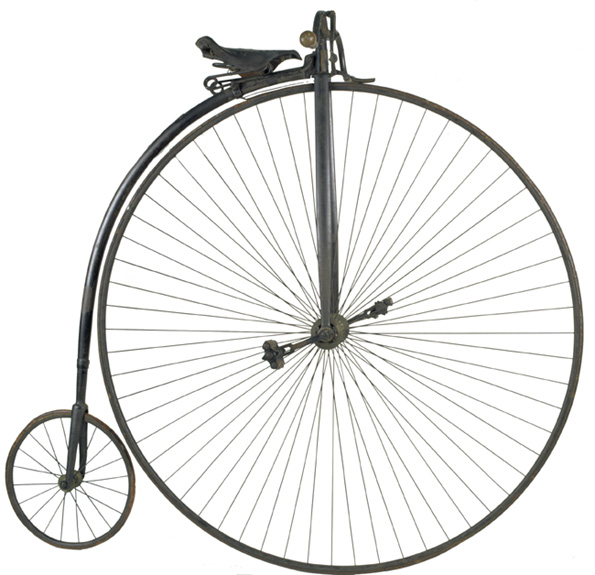 Penny-farthing bicycle, c1888
Penny-farthing bicycle, c1888
TLF ID R6368
This is a penny-farthing, or high-wheel bicycle, built in Melbourne by H Bassett and Co in the late 1880s. Called 'The Victory', it has a 142-cm diameter front wheel and a smaller rear wheel, both with solid rubber tyres. The pedals are fixed directly to the axle of the front wheel. The leather seat sits on a 'cradle spring' mounted on a frame formed from a length of steel tubing. Under the seat is a metal plate (not visible) with the inscription 'MBC' (Melbourne Bicycle Club). The metal handlebars are high on the frame above the front wheel. Attached to the handlebars is a lever to operate a 'spoon brake' pushing a scalloped piece of iron down onto the front wheel. The bike weighs 21 kg.
